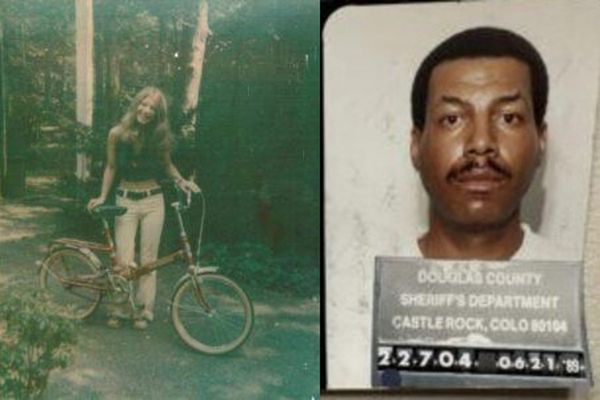
After hours searching the grey waters of the Mediterranean, a small dot appeared on the horizon: an unseaworthy wooden boat that had left the Libyan coast the day before. It had tried – but failed – to make it to Europe. Most of the 21 adults and children onboard had left behind war and torture, and said they would rather die on this crossing than return.

All of them were pulled safely onboard the search and rescue vessel, Life Support. Its crew, from the Italian NGO Emergency, had been alerted by Alarm Phone, an organisation running a hotline for people in distress at sea.
“We called them when water entered our boat. We were terrified,” says Hanan Muhanned, a 33-year-old Libyan woman cradling her screaming three-year-old daughter Qala. “Getting into the boat and trying for Europe was still better than the militias, better than conflict in Libya,” she adds.
Muhanned had paid a smuggler about $3,000 (£2,360) to take her, her husband and three children to Europe. Qala, who was born with an undiagnosed condition that left her unable to walk or speak, was her main concern. “We want the best future and medical care for our daughter,” Muhanned says.

The Mediterranean Sea remains the world’s most perilous migration route. Yet, despite this, the numbers opting to cross are rising again.
Last year, more than 270,000 migrants arrived in Europe; most of them across the Mediterranean, with a small number via land borders. In 2023, at least 3,760 people died or remain missing.
Emanuele Nannini, head of mission at Life Support, says: “The majority of people we rescue flee absolute horrors. Many have been put in detention centres or have experienced torture, sexual abuse and forced labour. Many have attempted to cross the Mediterraneans several times, but were pushed back.” During the Guardian’s week-long visit, Emergency rescued 69 people from three separate boats, all of them unseaworthy.

Maher Ali, 14, was in the second boat. When he first tried to pay a smuggler to take him to Europe, he was put in a car and told he would be driven to a beach. Instead, he was taken deep into the desert. “The journey took hours,” he says. “I was with several other men and we were eventually dropped in the middle of nowhere. The smugglers took all our money. They left us to die.”

Ali grew up in Raqqa in Syria, but war pushed his family to relocate to Lebanon. “Living in Beirut, I faced lifelong discrimination and eventually asked my father if I could leave,” he says.
After being dumped in the desert, Ali spent 15 days walking back to the Libyan coast. Exhausted and thirsty, he made it to a different smuggler’s house, where he shared a room with 50 Syrian men, before finally taking a boat from a deserted beach near the port city of Zuwara. He had spent $6,500 on his journey.
Sitting on the deck of Life Support, Ali stares into the distance where the Italian coastline is already visible. He has spent 37 harrowing hours in a small wooden boat, navigating the Mediterranean’s unpredictable waters, until finally being brought onboard this safer vessel. On the rescue ship, he has made friends with the 11 other boys his age – all of them unaccompanied – as well as several younger children travelling with their parents. They play cards together, listen to music and chain-smoke cheap cigarettes to pass time.

Avoiding the bustle, Abdul Gader, 27, sits quietly in a corner of Life Support. He fled Sudan’s war in Darfur and has already tried to cross the Mediterranean four times but each time, his boat was pushed back by the Libyan coastguard. Under his shirt, Gader hides scars of torture.

“I tried to find work in Libya to pay for the journey to Europe, but often I wasn’t paid. People called me ‘slave’; they ridiculed me and forced me to work for free. When I asked for money, I was sent to prison,” Gader says quietly. “They tortured and electrocuted me. Others were beaten to death.”
Gader managed to find a smuggler who arranged his final attempt to reach Europe. He was locked in a shipping container for several days, eating stale bread and drinking dirty water. “I paid 5,000 Libyan dinar (£800), all the money I had saved,” Gader says. “There was not a moment I wasn’t afraid while in Libya. I was willing to risk it all, or die.”
This year, in January alone, more than 9,000 people have arrived in the EU by sea, according to the UN. An estimated 41 have died or gone missing attempting the journey.

“The Mediterranean is a cemetery,” says Domenico Pugliese Life Support’s captain. The 52-year-old Italian previously worked on commercial oil vessels; this is his first foray into rescue work. “It has changed my life, my perspective,” he says, adding that he is proud of his work for the first time.
“I always knew that people left their homes, escaping war, violence and hunger, but now I really see them. I see the suffering and the extreme actions people take to cross the sea. I’m here to help save lives and to bring them to Europe; to bring them home.”







